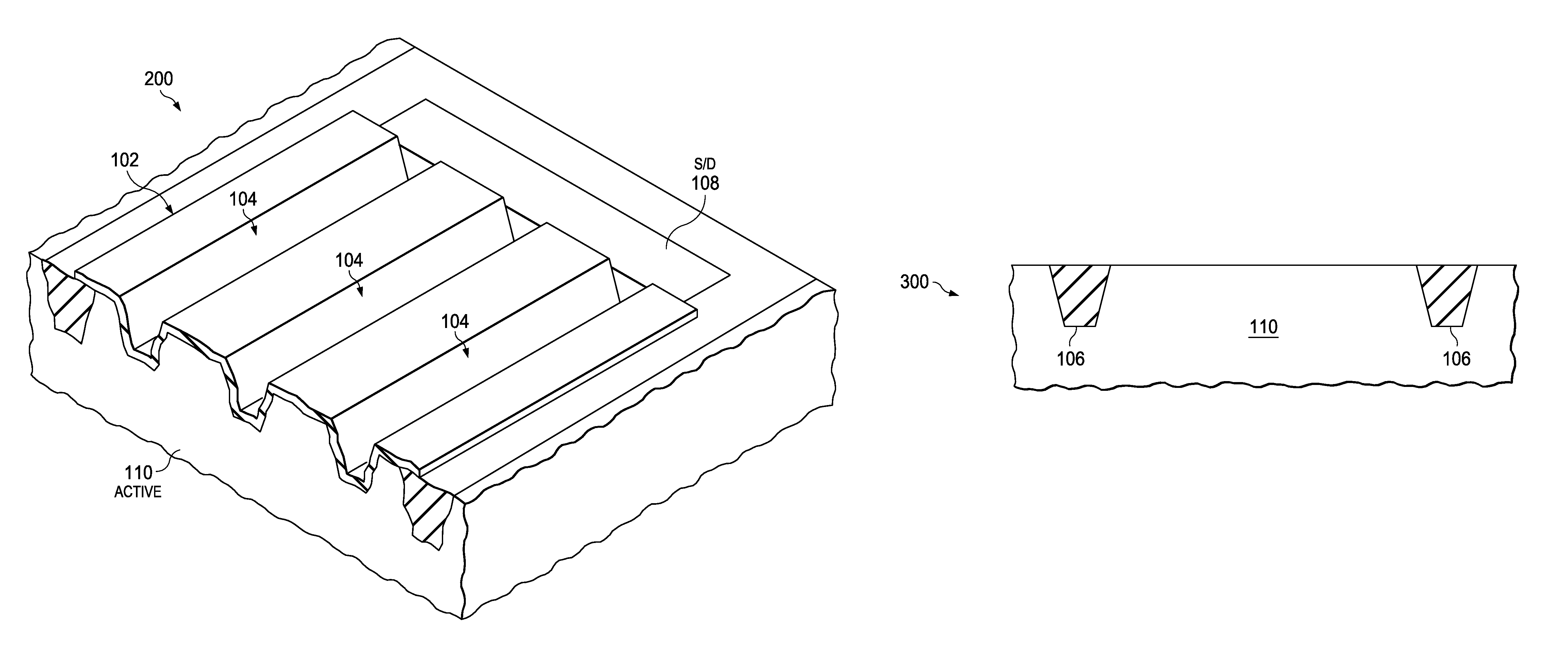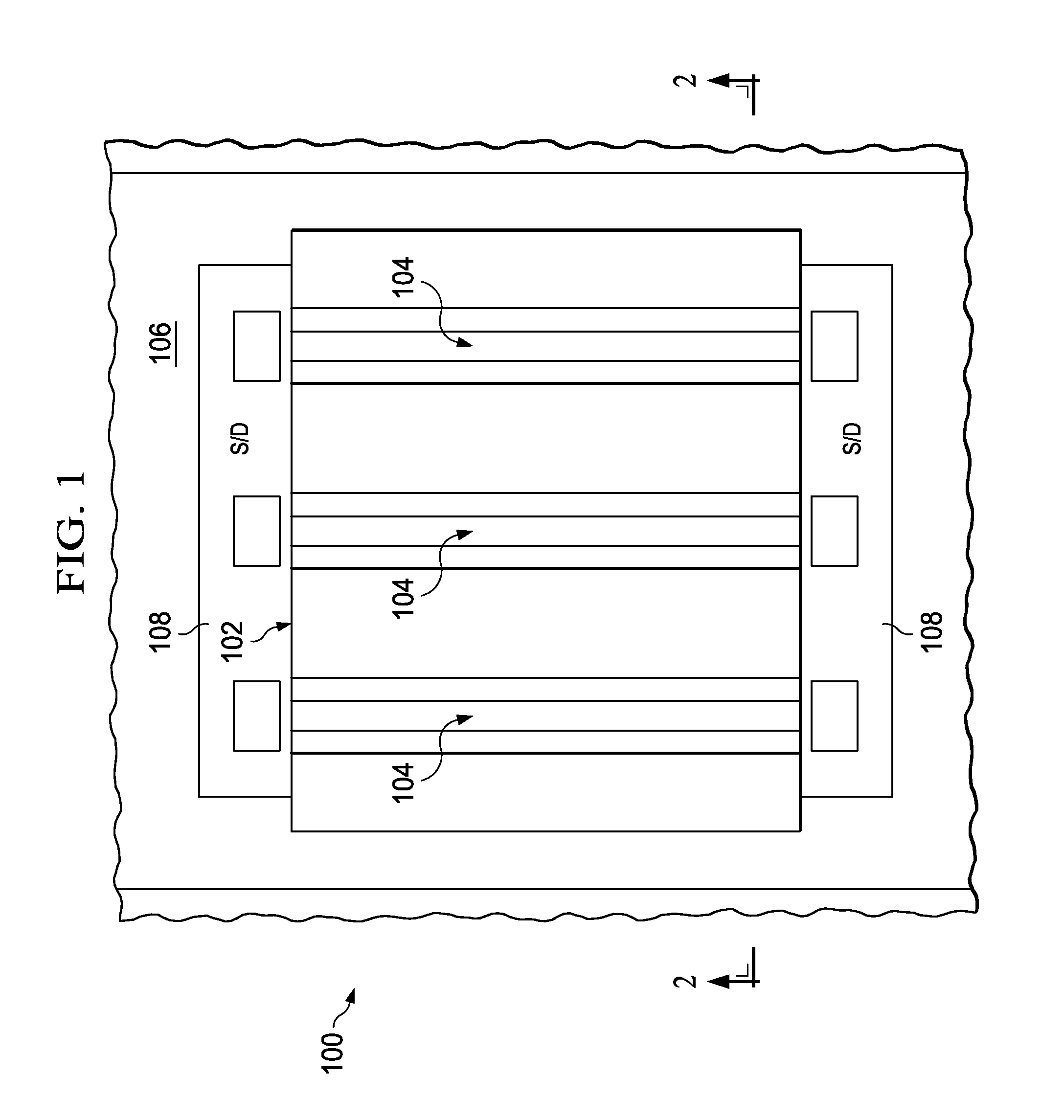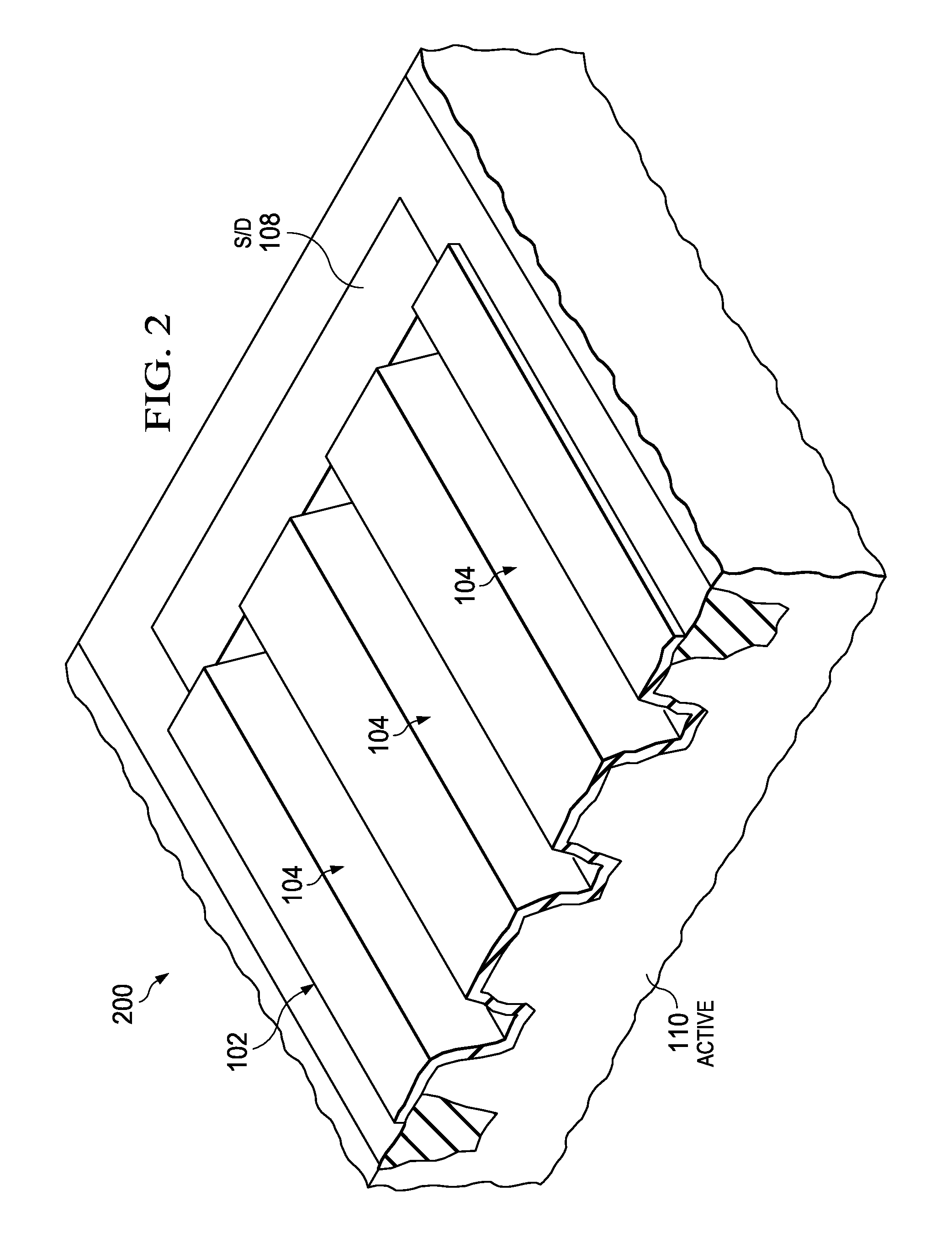Transistors with recessed active trenches for increased effective gate width
a technology of active trenches and transistors, which is applied in the direction of basic electric elements, electrical apparatus, and semiconductor devices, can solve the problems of limited gate width of wsub, limited static random access memory (sram) transistors, and limited finfet structures, and achieve the effect of increasing the effective width of active area and increasing the physical gate width of the transistor built on such a recessed active devi
- Summary
- Abstract
- Description
- Claims
- Application Information
AI Technical Summary
Benefits of technology
Problems solved by technology
Method used
Image
Examples
Embodiment Construction
[0030]One or more implementations of the present invention will now be described with reference to the attached drawings, wherein the reference numerals are used to refer to like elements throughout, and wherein various structures are not necessarily drawn to scale. The method of the present invention will be described with reference to the formation of recessed active trenches for wide transistors. However, the method is applicable to other processes, for example, a process for forming any suitable digital or analog electronic device, for example, large switches, I / O devices, logic devices, analog devices, power IC outputs, switches, large inverter switches, and the like. Furthermore, while the following detailed description is presently contemplated by the inventors for practicing the invention, it should be understood that the description of this embodiment is merely illustrative and that it should not be taken in a limiting sense.
[0031]The present invention provides for a method...
PUM
 Login to View More
Login to View More Abstract
Description
Claims
Application Information
 Login to View More
Login to View More - R&D
- Intellectual Property
- Life Sciences
- Materials
- Tech Scout
- Unparalleled Data Quality
- Higher Quality Content
- 60% Fewer Hallucinations
Browse by: Latest US Patents, China's latest patents, Technical Efficacy Thesaurus, Application Domain, Technology Topic, Popular Technical Reports.
© 2025 PatSnap. All rights reserved.Legal|Privacy policy|Modern Slavery Act Transparency Statement|Sitemap|About US| Contact US: help@patsnap.com



